Historic Press Traverse
HIGHLIGHTS:
- Explore Olympic National Park’s vast wilderness, thousands of years of human history, and several different ecosystems including glacier-capped mountains and temperate rainforests.
- Challenge yourself with a beautiful, yet rugged hike through old-growth forests - hugging rivers along the way. You will average 8 miles of backpacking per day.
- Experience the Northwest in a unique, exclusive way by hiking along amazing vistas and lush forests full of ferns, moss, shrubs, and berries.
Day 1
The first day will begin with an evening orientation led by your hiking guides to prepare you for the challenge ahead. After the orientation, enjoy a delicious welcome dinner and get to know your hiking companions before getting your last night’s sleep in a hotel before this epic journey begins. Enjoy these creature comforts before setting off for the backcountry come morning.
Day 2
This multi-day Olympic National Park hiking trip begins with a 6:30 am pick-up at your hotel. After a 3-3.5 hour scenic drive, you’ll begin hiking along the North Fork of the Quinault River. Starting with gentle grades along the river bottom, and then weaving back and forth through many shallow creeks, and crossing several bridges over narrow ravines while climbing up above the river floor. Big leaf maples give way to Sitka Spruce as you wind further into the wilderness, before reaching your first camp along the beautiful Elip Creek after hiking a total of 6.6 miles.
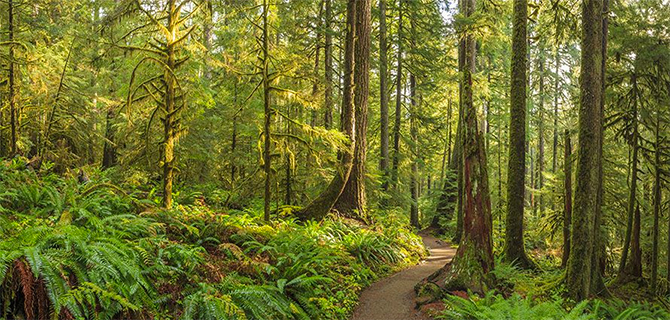
Day 3
The second full day of backpacking is one of the biggest days in this journey. You’ll cross swift creeks and ford the Quinault River, climb through ancient old-growth forests, and keep an eye out for blazes and marks from the original Press Expedition.
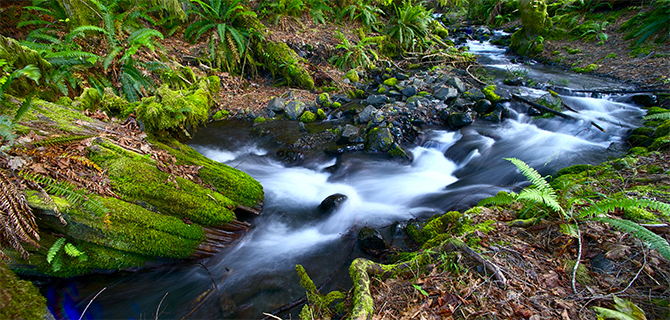
Eventually, you’ll make your way up the Low Divide—the separation between the Quinault and Elwha rivers—and enter a beautiful sub-alpine meadow of the Low Divide with views of Mt. Seattle. This ~10 mile hike can take between 7 and 10 hours, depending on the group’s speed and the intensity of the river crossings. You’ll make camp and relax in the wide open meadows at the summit of this incredible hike.
Day 4
After a delicious trail breakfast, you’ll continue across the Low Divide and on the way you will pass two icy alpine lakes, where the group can stop for a brief swim if you have the time and courage. From there, drop quickly into the Elwha Basin and begin your descent following the Elwha River toward the Strait of Juan de Fuca.
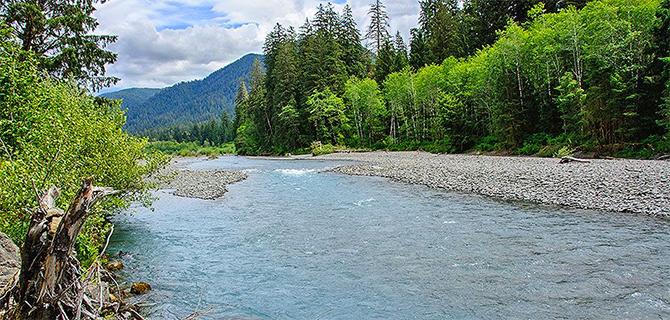
Open meadows, maple flats, and river views will accompany you on our way, as you hike along and ford the cool waters of the Elwha River. Keep your eyes peeled for black bears, elk, and deer in the forest and the bright flash of fish such as rainbow trout or one of several species of salmon in the river. After nearly 8.5 miles, your hiking day will finish at Camp Wilder - situated next to a large, dry channel of the Elwha that is perfect for star-gazing if the weather is favorable.
Day 5
This day brings you past more river fords, more old growth, and more beautiful river valleys. The glacial blue-green of the Elwha will deepen in color, while the vegetation changes as we continue to drop into warmer, more temperate climates.

Along the way, we’ll begin passing signs of early settlement along the Elwha, including the historic Remann’s Cabin, a 1920’s fishing cabin, and you’ll meet up with hikers on the Pacific Northwest Trail (PNT) as it joins the trail at the Hayes River Guard Station. After a long but rewarding hiking day following the Elwha River, we’ll arrive at the Elkhorn Guard Station situated right on the river where we’ll camp for the night after hiking nearly 10 miles in the day.
Day 6
The hike brings you to the upper end of the recovery zone of the Elwha River. Two recent dam removals are changing the landscape of the Elwha River, and restoring it to a balanced ecosystem. Salmon and riparian plants are returning, and as you get closer to the old dam sites, you’ll see how much has changed in just a few years.
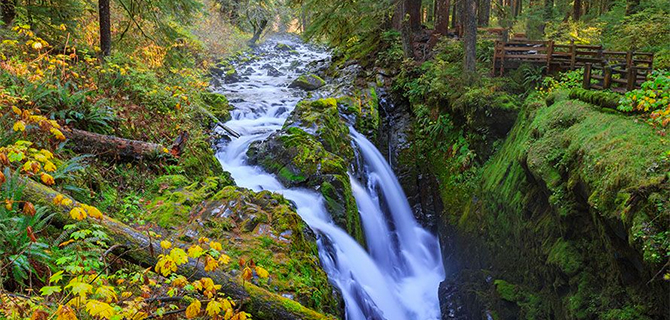
You will pass more historic structures just before camp at Humes Ranch, the site of a family homestead at the turn of the 20th century. After a strenuous 9.3 miles, you’ll set our camp there, on a bluff overlooking the beautiful Elwha River and enjoy our last night in the backcountry.
Day 7
The final day of the trek begins as you finish the last several miles of trail, and if time allows, a stroll past the turbulent whirlpools of Goblin Gates. You will emerge at Whiskey Bend Trailhead, which is no longer accessible by most cars due to road washouts in the spring floods since the dams were removed. However, you might encounter a truck full of field biologists coming to study the recovery of the Elwha River. You will finish the journey with a walk along the Whiskey Bend Road, passing the remains of the Glines Canyon dam with an amazing overlook of the floodplain of former Lake Mills as well as stand on remnants of the dam itself. After losing most of our elevation for the day, you reach the washed out areas of the road that prevent vehicles from reaching the trailhead. Finally, after 9.1 miles, you will reach the Madison Falls Trailhead, having completed the Press Traverse in a fraction of the time of the original explorers (and hopefully avoiding most of their trials, tribulations, and blizzards as well).
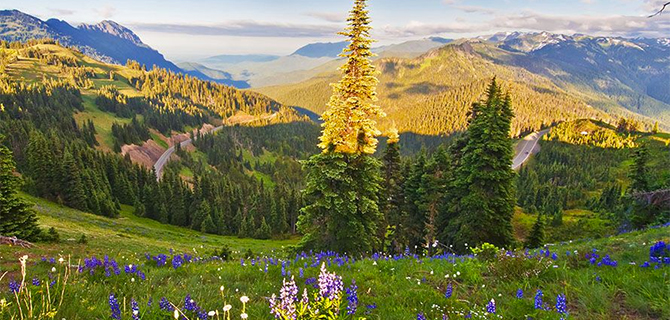
Together you will drive through Port Angeles and get some views of the Hood Canal as you make your way back towards the hotel for the night. Enjoy a final farewell dinner together as a group, and say your goodbyes before heading out the next morning.
Day 8
Individuals may depart for home at any time, or choose to stay and explore Seattle and the Pacific Northwest.


